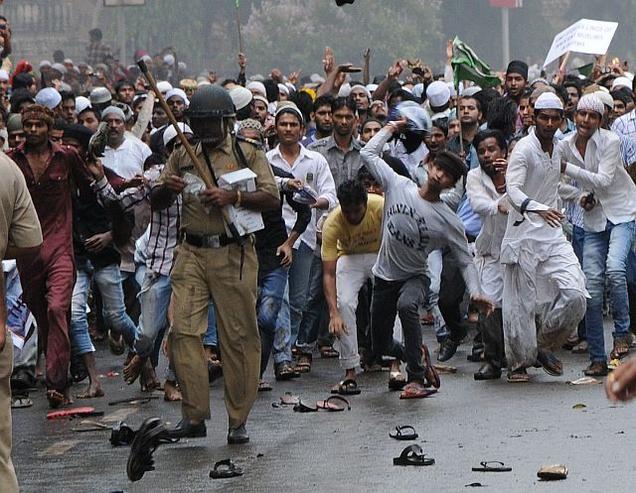
“Otherwise when do you see a Joint Commissioner [Law and Order], four Deputy Commissioners and an Additional Commissioner on the field in uniform on a holiday for a protest rally,” he asked. A force of around 750 personnel was enough to control mobs running to more than 50,000 people, he claimed. There were around 15,000-20,000 protesters present near the Azad Maidan.
Mr. Patnaik said violence erupted at 3.17 p.m. and the situation was brought under control by 3.40 p.m.
Asked why force was not used earlier to control the rioters, he said the police showed utmost restraint. “Should I have fired, I don’t know. Would you have wanted to see 500 bodies? I was more afraid of my force when 500 jawans were ready to fire, with hands on the triggers. I had to control them first, then turn to the protesters,” Mr. Patnaik told journalists after holding a special meeting with senior officers.
Mr. Patnaik was on the spot within minutes of the situation turning violent. He addressed the crowd from the dais of the rally and appealed for calm, reminding people of the incidents during the 1992 Babri Masjid demolition. The police chief told them he did not want any repetition of those ghastly memories, thus calming down the crowds.
Muslim leaders tendered apologies to him on Monday and expressed their desire to help the injured police personnel. “All the Ulema had come to apologise. That is because they know that the police acted with equity and fair play,” he said.
A magisterial inquiry had been ordered into the police firing and a special investigation team set up to probe the incident.
Officers of the cyber crime unit would be associated with the probe. Many morphed images were circulated among the gathering to oppose the “atrocities” on Muslims in Assam and Myanmar.
So far, 23 persons had been arrested.
Officials said they were looking into whether underworld elements were present among the rioters.
Mr. Patnaik said they were of the opinion that it was not the protesters who were involved in the arson. “It was another mob that came from outside. We have not yet been able to identify the group. But we are going through CCTV footage and the footage provided by camerapersons.”




Comments
Add new comment